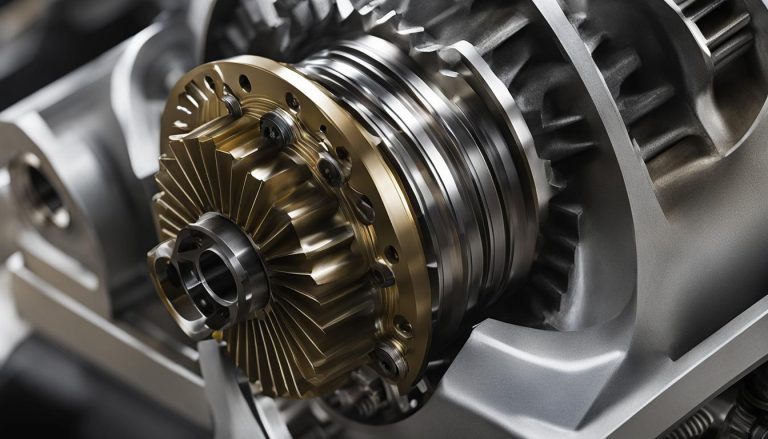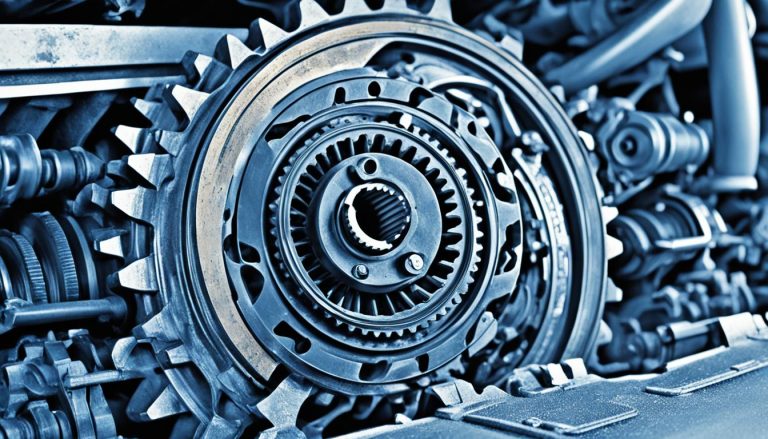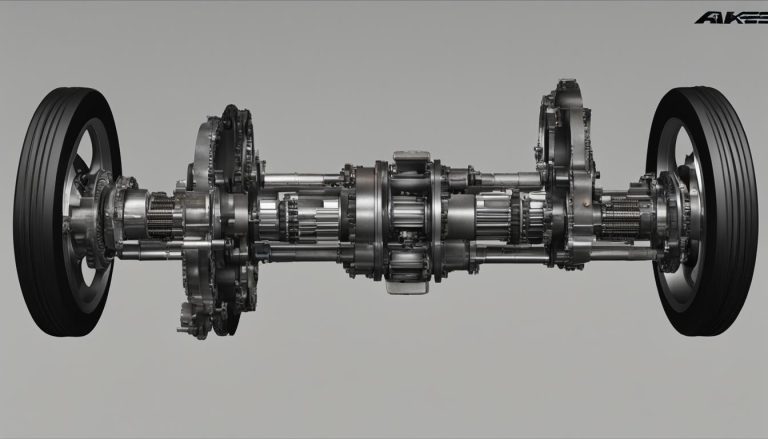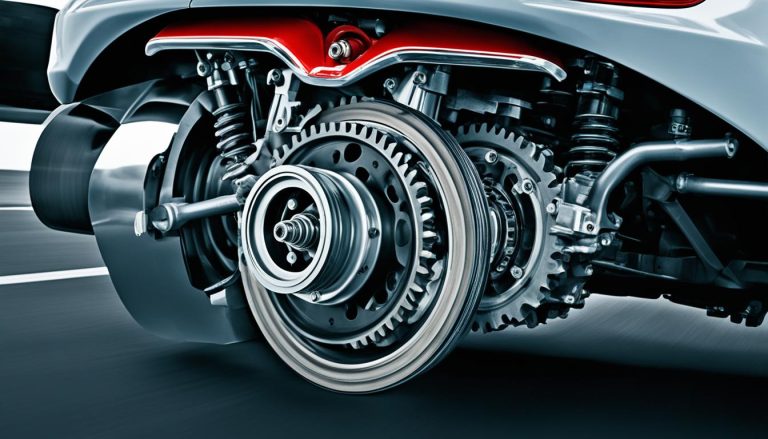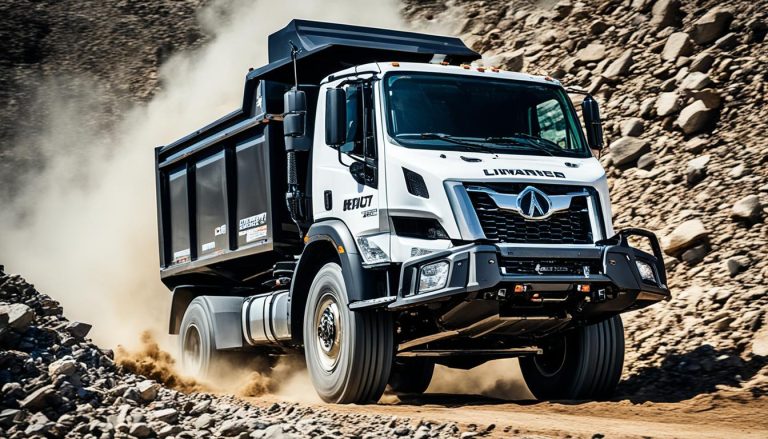Unlock ELSD: Get Your Limited-Slip Differential
Are you contemplating stepping up your driving game with a cutting-edge electronic limited-slip rear differential (ELSD)? If you’re seeking unparalleled traction and exceptional handling, understanding the ins and outs of ELSD in cars could be a game-changer for you. Whether you’re a seasoned car enthusiast or simply someone who craves a superior driving experience, the advantages of ELSD are too significant to ignore. And if you’re handy with tools and have an adventurous spirit, you might even be curious about how to install ELSD for a custom touch on your ride.
But before you jump into the driver’s seat ready for action, let’s delve into what makes ELSD technology stand out and why it’s becoming increasingly popular among car aficionados. Clearly, it’s more than just a performance upgrade—it’s about refining your connection with the road and unlocking the full potential of your vehicle. Buckle up and prepare to discover how ELSD can transform your drive.
Key Takeaways
- Discover the difference ELSD makes in handling and traction.
- Learn how ELSD outperforms traditional differentials in cars.
- Explore the process and importance of professional installation for ELSD systems.
- Glean insights into the diverse benefits provided by ELSD technology.
- Understand why ELSD is a coveted feature for both off-road enthusiasts and everyday drivers.
Understanding the ELSD System in Modern Vehicles
As you explore the latest advancements in automotive technology, one innovative feature stands out — the ELSD system. Its ability to enhance the performance of ELSD equipped cars is transforming driving experiences. Let’s delve into what makes ELSD systems a game-changer in the realm of vehicle dynamics.
How Does ELSD Enhance Driving Performance?
Imagine taking a sharp turn at high speeds — it’s in moments like this that the benefits of ELSD come into full play. Electronic inputs fine-tune the system, adjusting the differential to optimal settings for the conditions at hand. This means improved traction, reduced wheel spin, and a smoother journey around those bends. It’s the difference between a good drive and a great one, providing not just comfort but also an edge in safety and control.
ELSD vs Traditional Differential: A Comparison
When comparing ELSD vs traditional differential, think of precision versus brute force. Traditional limited-slip differentials mechanically distribute power, which can limit maneuverability under certain conditions. ELSD systems, conversely, use a sophisticated algorithm to determine the best power distribution, preserving momentum and ensuring efficiency in torque transfer. This intelligent design is one of the critical ELSD advantages that provides a more dynamic and responsive driving experience.
In summary, incorporating an ELSD into your vehicle is not just about improving traction; it’s about unlocking the true potential of your car’s performance. With an ELSD, you’re prepared for whatever the road throws your way, ensuring each journey is as smooth as it is memorable.
How Can I Get the Electronic Limited-Slip Rear Differential ELSD
Are you considering enhancing your vehicle’s performance with an Electronic Limited-Slip Rear Differential (ELSD)? Incorporating this sophisticated piece of technology can dramatically improve your driving experience, offering improved traction and better handling. To acquire an ELSD, you have two options: purchase a vehicle that comes factory-equipped with ELSD, or install ELSD as an aftermarket upgrade.
When seeking an aftermarket installation, the key to success is conducting thorough research on auto shops that excel in drivetrain modifications. You’ll want to ensure that the shop you choose has a proven track record with ELSD technology and experience with your specific car model. Before the installation process begins, sourcing the appropriate ELSD unit that is compatible with your vehicle is crucial. This ensures a seamless integration with your vehicle’s existing dynamics, allowing you to reap all the benefits of your newly enhanced performance.
- Research and select a reputable auto shop with ELSD experience
- Ensure compatibility with your vehicle model
- Source the correct ELSD unit for your car
Once you have identified a qualified auto shop, they will handle the technicalities of the installation process. This involves precise mechanical work, connecting electronic components, and potentially calibrating the system to align with your vehicle’s specifications.
Installing an ELSD is not just about enhanced drivetrain performance, it’s about transforming your driving experience into one that exudes confidence and control in every turn.
If you’re not certain where to begin, start by consulting with your regular mechanic or reaching out to local car enthusiasts who specialize in performance upgrades. With the right team and equipment, the question of how can I get the electronic limited-slip rear differential ELSD becomes a fulfilling journey towards achieving the ultimate driving experience.
Remember, upgrading to an ELSD is not just about the installation—it’s a strategic move towards optimizing the agility and responsiveness of your vehicle. Whether you’re aiming for precision on the racetrack or seeking stability on rugged trails, ELSD is a powerful ally in your vehicular arsenal.
To ensure that you make the best decision, discuss the details with your chosen automotive professionals about the entire process, from installation to post-installation support. These steps will not only prepare your vehicle for an ELSD upgrade but will also secure the performance benefits that come along with it.
The Benefits of Installing an ELSD in Your Car
Imagine stepping into your vehicle on a rainy day, confident that your car has the traction and control necessary for a smooth and safe journey. This is the peace of mind offered by the Electronic Limited-Slip Differential (ELSD), an innovative technology designed to take your driving experience to the next level. But what exactly are the advantages of ELSD?
First and foremost, the ELSD system dynamically improves traction, especially on slippery or uneven surfaces. When one wheel encounters less resistance, traditional differentials might send too much power to that wheel, resulting in a spin without forward movement. An ELSD, however, modulates power distribution in real-time. It directs torque to the wheel with the most grip, ensuring your car remains responsive and under control, a function that’s particularly critical during aggressive maneuvers.
Enhanced handling is another standout benefit when ELSD in cars comes into play. Whether you’re navigating tight corners or dodging unexpected obstacles, the precision of an ELSD’s torque biasing ensures that you can maintain stability and control. For drivers of high-performance or off-road vehicles, this technology is nothing short of revolutionary, enabling a level of handling finesse that was previously unattainable.
- Improved Traction: Minimizes wheel spin and maximizes control.
- Enhanced Handling: Offers superior cornering and agility.
- Torque Biasing: Directs power to the wheel with most grip.
- Performance Driving: Ideal for high-performance and off-road use.
Additionally, an ELSD rear differential is not a feature reserved for only the most luxurious or sporty cars. It’s becoming widely available in a variety of models, ensuring that a broader audience can enjoy its advantages. With the ELSD’s introduction to different car segments, it caters to drivers seeking performance upgrades without compromising on day-to-day practicality.

When you’re considering upgrades to your vehicle, adding an ELSD could transform the way you interact with the road ahead. Whether you are a performance enthusiast or simply looking to enhance your driving safety and pleasure, the addition of an ELSD sets a new standard in vehicle dynamics and control. In a world where road conditions can be as unpredictable as the weather, the ELSD technology arms you with the optimal response you need to tackle every journey with confidence.
ELSD Explained: How It Works in a 4WD System
As you venture into the world of four-wheel drive systems, you may have come across the term ELSD system. This innovative technology plays a critical role in improving your vehicle’s handling and traction, especially on challenging terrains. But exactly how ELSD works and what are the ELSD benefits? This section explores the essence of ELSD performance within a 4WD drive system to give you a better understanding of its profound impact on your driving experience.
Interaction Between ELSD and Vehicle’s Braking System
The ELSD system boasts a sophisticated connection with the vehicle’s braking system, specifically through the brake traction control feature. This integration facilitates advanced torque management at each wheel, effectively countering torque loss due to wheel slip. It operates harmoniously with the anti-lock braking system (ABS) to enhance the vehicle’s overall grip on diverse surfaces, propelling ELSD performance to impressive heights.
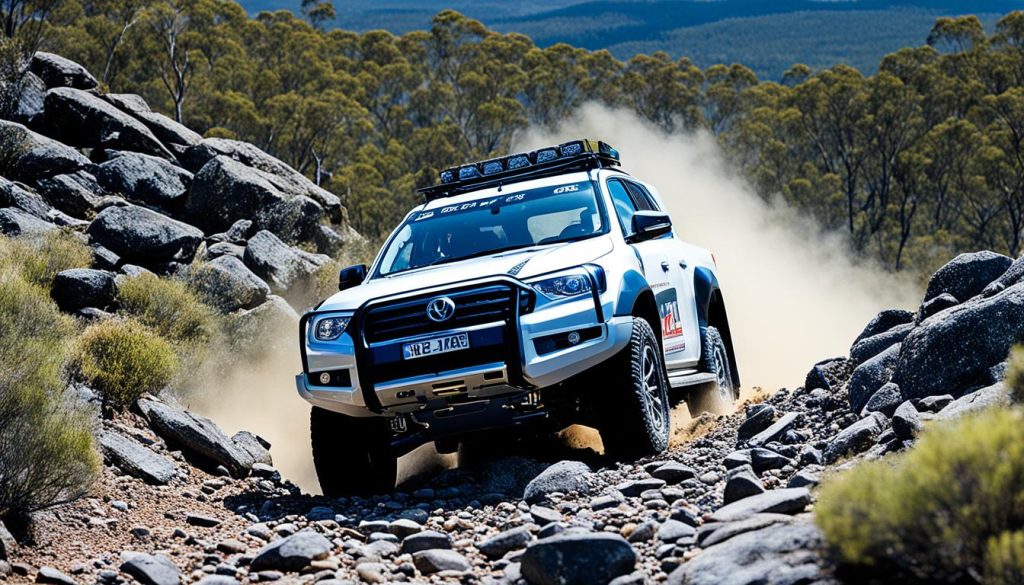
Automated Torque Biasing for Improved Handling
A core component behind the ELSD system is its automated torque biasing capability, allowing for meticulous adjustments in locking pressure responsive to driving mode selections. When you opt for specific modes like snow or sport mode, the ELSD tailors the default clutch pack pressure within the transfer case. This adjustment manipulates torque distribution between front and rear wheels, culminating in a smoother and more responsive driving experience during turns and providing robust traction when faced with demanding conditions.
| ELSD Feature | Impact on 4WD System |
|---|---|
| Automated Torque Biasing | Optimizes torque distribution for improved handling and stability during various driving scenarios. |
| Brake Traction Control Integration | Works with ABS to prevent slip-related torque loss, maximizing traction across varied terrains. |
| Adaptive Locking Pressure | Modifies clutch pressure to suit driving conditions, delivering tailored vehicle dynamics and comfort. |
In conclusion, understanding the inner workings of the ELSD in a 4WD setting equips you with the knowledge to appreciate your vehicle’s advanced capabilities. As you traverse roads less traveled or commonly tread, the ELSD’s features—such as automated torque biasing—combine to produce an unparalleled driving performance, firmly establishing ELSD as a game-changer in the realm of vehicle dynamics.
Advantages of ELSD Over Mechanical Locking Differentials
When you’re pushing your vehicle to its limits, you’ll find that the performance of ELSD is second to none. Unlike mechanical locking differentials, which are often reactive, Electronic Limited-Slip Differentials offer a proactive approach to improve traction and stability. Let’s dive into how these advanced systems provide significant ELSD advantages during demanding driving scenarios.

Performance Insights to ELSD During High Demand Conditions
ELSD systems shine the brightest under high demand conditions where precision is key. Imagine you’re accelerating rapidly or cornering hard—scenarios where grip and control are crucial. The ELSD’s intelligent design ensures a dynamic power split between the wheels. This is crucial, not only for maintaining grip but also for preventing mechanical strain. The upshot? You experience enhanced durability and reliability in even the most challenging driving situations.
Dynamic Torque Distribution for Enhanced Stability
One key feature that sets ELSD apart is its dynamic torque distribution. It’s like having an astute co-pilot that constantly adjusts the power sent to each wheel to maintain the perfect balance between grip and handling. It’s based on a complex matrix of factors: the steering wheel’s position, the speed, and how the wheels are turning. This translates to improved stability and a smooth, controlled ride—whether you’re on a high-speed straight or tackling a rugged trail.
| ELSD Feature | Benefit |
|---|---|
| Intelligent Torque Application | Prevents axle shaft damage and wear under extreme conditions |
| Real-time Slip Tolerance Adjustment | Ensures optimal traction and minimizes unnecessary locking |
| Variable Locking Pressure | Maintains power during turns for faster, smoother exits |
| Integration with Vehicle’s Electronic Systems | Enhances overall ELSD stability and performance |
In summary, the advantages of ELSD systems are not just theoretical; they represent a practical enhancement to your driving experience. Whether you value performance or just want the peace of mind that comes with superior traction and control, an ELSD can deliver these without compromise.
Step-by-Step Guide: How to Install ELSD in Your Vehicle
Embarking on an ELSD installation is a venture best approached with a deep understanding of your vehicle’s inner workings. Below is a friendly guide devised to illuminate the pivotal steps you will encounter on your journey to enhance your ride with an ELSD unit. Take heed of this ELSD installation guide, but remember, enlisting the service of a professional is strongly advised to ensure peak performance of your system.
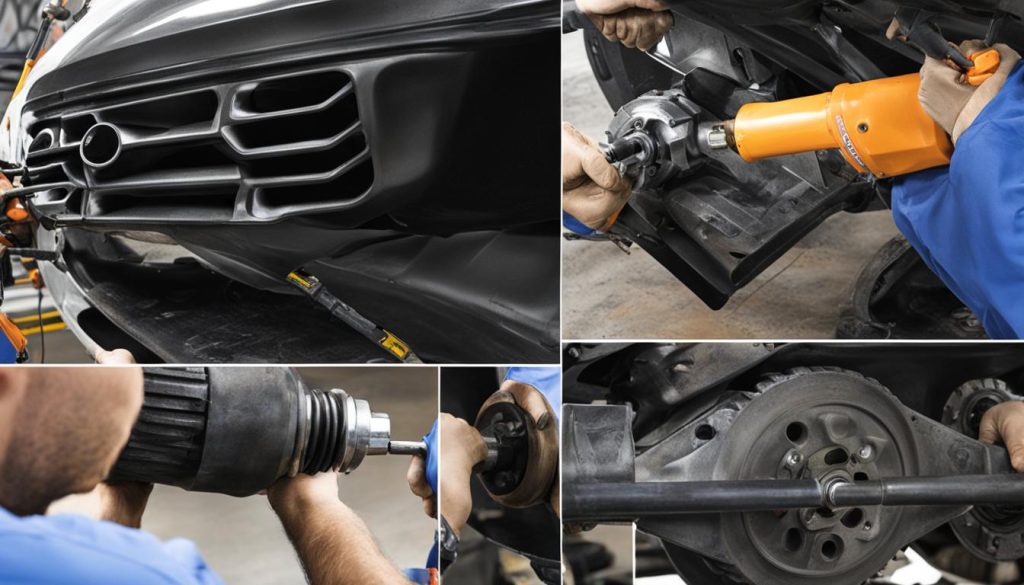
- Vehicle Consultation: Examine your vehicle’s specifications to determine the compatible ELSD model. Not all ELSD units will suit your vehicle, so this initial step is crucial.
- Purchase the Correct ELSD: Procure the ELSD designed for your make and model. It’s essential to source authentic and reliable parts for the installation.
- Evaluate Your Workspace: Ensure you have a secure and well-equipped environment to perform the installation. Safety should be your number one priority.
- Removing the Old Differential: Safely remove the existing differential. This step requires mechanical prowess and an acute familiarity with your vehicle’s drivetrain.
- Installation of the ELSD Unit: Mount the ELSD into place. Precision is key to aligning it correctly within the drivetrain and avoiding future complications.
- Electronic Configuration: Connect and configure the electronic controls. A misstep here could lead to ineffective operation of the ELSD system.
- Testing and Calibration: An imperative phase is to test the ELSD functionality. Calibration can be complex and may necessitate specialized diagnostic tools.
Patience and attention to detail can take you far in how to install ELSD. However, the expertise of a trained professional cannot be overstated, as they bring years of experience to ensure that your ELSD delivers its full potential. Trust in their guidance to attain a harmonious blend of your vehicle’s prowess and the sophisticated capabilities of an Electronic Limited-Slip Differential.
By following this ELSD installation guide, you are not only investing in the performance improvement of your vehicle but also in your safety and driving enjoyment. Never underestimate the complexities involved; when in doubt, professional assistance is invaluable. Breathe new life into your driving experience with an ELSD that is flawlessly integrated into your vehicle’s anatomy.
Exploring ELSD Availability: From Off-Roading to Daily Driving
As you venture into the high-performing realm of vehicular enhancements, it’s clear that Electronic Limited-Slip Differentials (ELSD) are changing the game. Beyond the race track, ELSD availability is now a reality for the daily commuter and the weekend off-road warrior alike. No longer a rarity, ELSD systems have made their way into a variety of vehicles—ranging from rugged and ready SUVs to sleek, agile performance cars. Whether you’re navigating the treacherous turns of an off-road trail or the tight corners of urban jungles, ELSD affirms its role as a key player in diverse driving scenarios.
The Role of ELSD in Various Driving Scenarios
On the rugged paths less traveled, off-roading with ELSD proves to be a transformative experience. Here, traction is king, and with ELSD, you rule the terrain with unparalleled grip and control. Switching back to your day-to-day commute, ELSD seamlessly transitions into ensuring your daily driving is characterized by unmatched precision. Weather and road unpredictability toss a multitude of challenges at drivers, but with ELSD, such variables are merely afterthoughts as its advanced tech delivers safety and superior handling regardless of conditions.
Maximizing the Potential of ELSD in Different Terrain Modes
The true prowess of your vehicle’s ELSD shines in its exceptional versatility. Today’s tech-savvy cars come equipped with selectable ELSD terrain modes, paving the way for tailored driving experiences. Feel free to push your vehicle to new limits; be it mastering the art of rock crawling or cutting through a snow-blanketed road, your ELSD adjusts its differential lock to suit the quest at hand. This intelligent integration taps into the full ELSD potential, enabling you to face a myriad of conditions with confidence. No matter the journey, ELSD stands ready to optimize every mile.
FAQ
What is an Electronic Limited-Slip Differential (ELSD) and how does it work in cars?
An Electronic Limited-Slip Differential (ELSD) is a type of differential that uses electronic controls to manage the distribution of torque between the wheels of a vehicle. It receives input from various sensors and adjusts the locking force on the fly, delivering better traction and handling, especially in challenging driving conditions.
How does ELSD enhance driving performance compared to traditional differentials?
ELSD enhances driving performance by intelligently controlling the differential locking force based on real-time data from the vehicle’s sensors. This allows for better grip during acceleration, improved stability when cornering, and more precise handling, unlike traditional differentials that rely on mechanical locking, which can be less responsive and adaptive to changing conditions.
How can I get the Electronic Limited-Slip Rear Differential (ELSD) installed in my vehicle?
To get ELSD installed in your vehicle, you can either purchase a car that already comes equipped with the system or seek an aftermarket installation. For aftermarket installations, choose a reputable auto shop with expertise in installing ELSD units and ensure compatibility with your vehicle’s model.
What are the advantages of installing an ELSD in my car?
Installing an ELSD provides several advantages, including better traction on various surfaces, reduced wheel spin, enhanced handling during aggressive maneuvers, and improved vehicle control. It is especially beneficial for high-performance and off-road vehicles where maximum grip and precise handling are crucial.
How does the ELSD interact with a vehicle’s braking system in a 4WD system?
In a 4WD system, the ELSD interacts with the vehicle’s braking system through brake traction control, which helps manage torque at each wheel. The ELSD works in tandem with the ABS to redistribute torque to the wheels with the most grip, enhancing traction and preventing slip.
How does automated torque biasing in ELSD improve vehicle handling?
Automated torque biasing in an ELSD system adjusts the locking pressure of the differential based on the driving mode and conditions, allowing for optimized traction. This dynamic adjustment provides a tailored driving experience, improving handling during turns and maintaining better traction under varied conditions.
In what situations does ELSD show a significant advantage over mechanical locking differentials?
ELSD shows a significant advantage over mechanical locking differentials during high-demand conditions like rapid acceleration, tight cornering, or when navigating rough terrain. The ELSD’s intelligent locking allows for a dynamic distribution of power, enhancing grip and preventing axle shaft breakage under extreme loads.
What makes dynamic torque distribution in an ELSD system beneficial for vehicular stability?
Dynamic torque distribution in an ELSD system tailors the degree of differential locking in real-time. By considering factors such as steering wheel position, speed, and wheel articulation, it ensures optimal traction without unnecessary locking of the wheels, which contributes to improved overall vehicular stability.
What are the steps for installing an ELSD in my vehicle?
Installing an ELSD involves selecting the right ELSD unit for your vehicle, removing the current differential, precisely integrating the new ELSD into the drivetrain, and ensuring electronic controls are correctly connected and calibrated. Due to the complexity, professional installation is usually recommended.
What is the role of ELSD in different driving scenarios, and how can it be optimized for various terrain modes?
ELSD plays a versatile role in improving traction and control across different driving scenarios. From enhancing off-road capabilities to providing safer handling in daily driving, ELSD can adaptively lock the differential to optimize performance. Vehicles equipped with ELSD often feature selectable terrain modes that adjust differential behavior to suit scenarios like rock crawling or icy roads, maximizing handling and stability.

